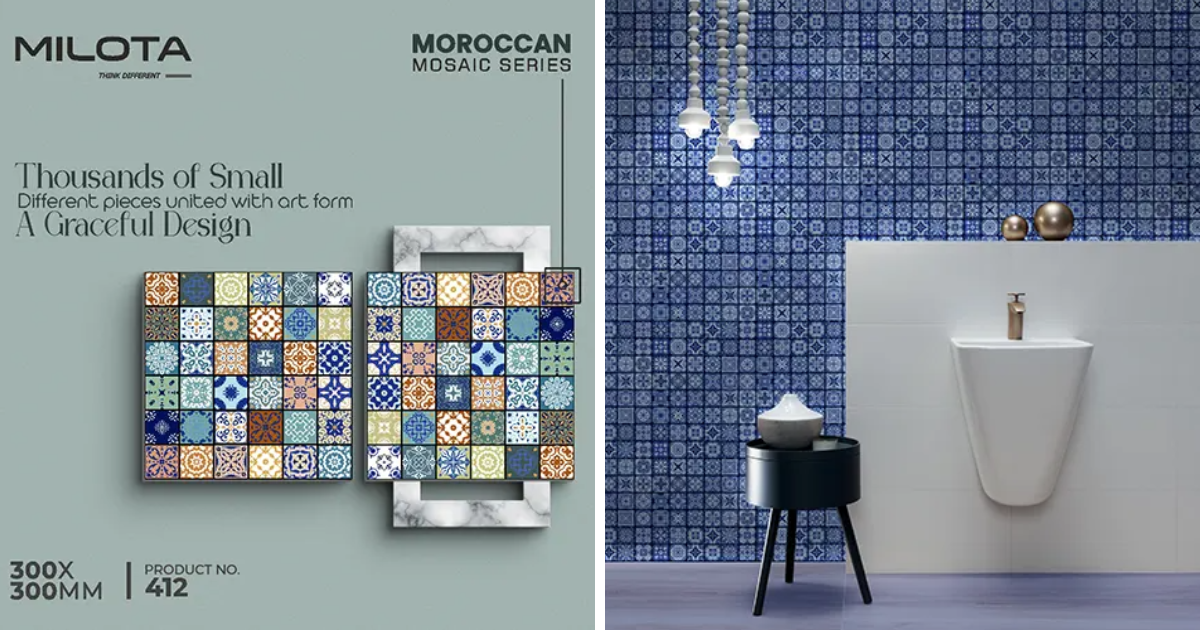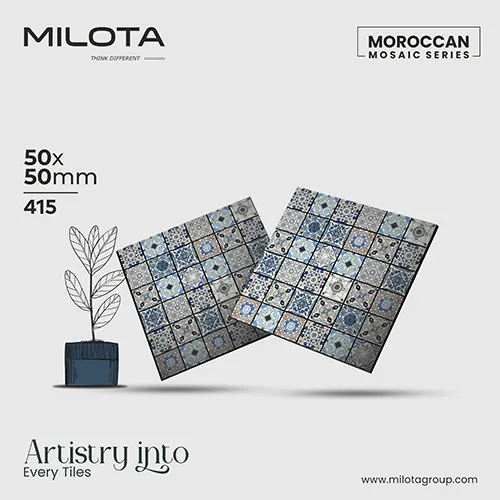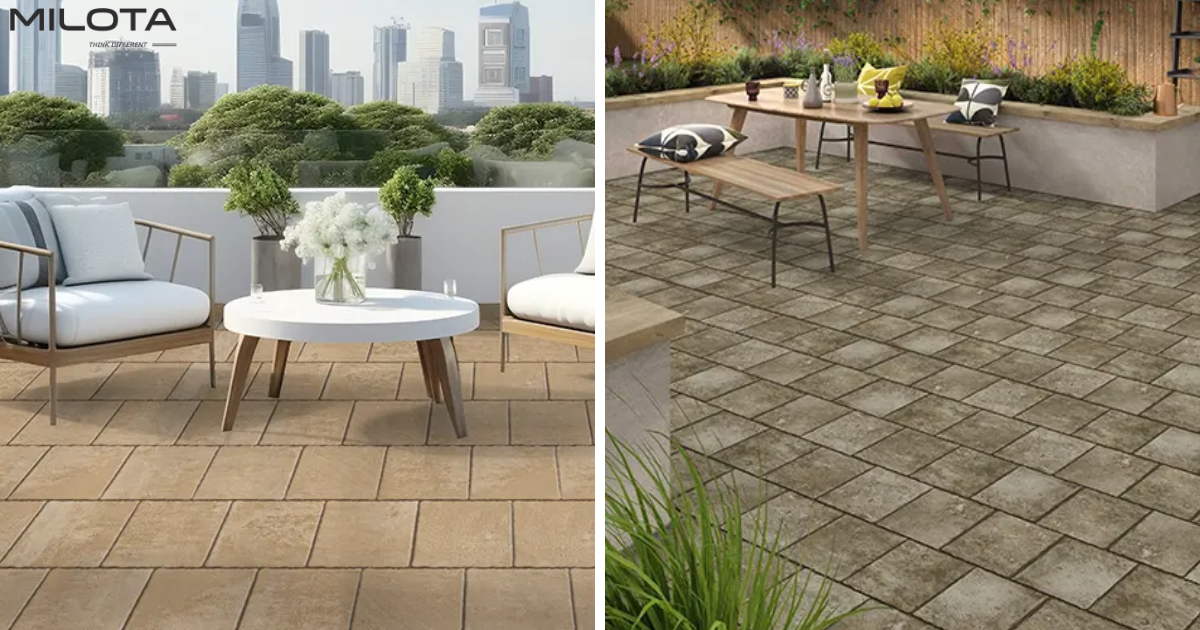Bring Exotic Elegance Home | Top Moroccan Tile Trends for 2025

The allure of Moroccan tiles continues to captivate interior designers, homeowners, and architects alike as we step into 2025. These mesmerizing pieces of art, renowned for their intricate geometric patterns and rich color palettes, are making a bold comeback. From kitchens to patios, Moroccan tiles are elevating spaces with their exotic elegance and enduring craftsmanship.
The Rising Popularity of Moroccan Tiles in 2025
The growing appeal of Moroccan tiles lies in their perfect harmony between aesthetic beauty and cultural depth. As consumers lean toward artisanal and globally inspired décor, Moroccan tiles are seeing a surge in demand. The new year welcomes contemporary adaptations of these traditional designs—featuring sleeker finishes, bolder colors, and sustainable materials.
Expect to see Moroccan tiles used not just in Mediterranean-inspired homes, but also in urban lofts, minimalist condos, and commercial spaces.
Top Moroccan Tile Trends to Watch in 2025
1. Monochrome Moroccan Magic
While traditional Moroccan tiles are known for their vivid blues, reds, and yellows, 2025 welcomes a shift toward monochrome palettes. Black-and-white Moroccan tiles are dominating floors and bathroom walls, providing a clean yet exotic statement.
The minimal contrast enhances modern aesthetics without sacrificing the visual appeal that Moroccan patterns bring. These designs are perfect for Scandinavian-meets-Moroccan interiors.
2. Oversized Zellige Tiles
Zellige tiles, handcrafted from non-refined natural clay, are Morocco’s signature contribution to the tiling world. This year, we’re seeing an evolution: oversized Zellige tiles.
Larger formats reduce grout lines and make rooms appear more open and seamless, while still delivering that handmade imperfection and depth of color that make Zellige beloved worldwide.
3. Matte Finishes and Earthy Tones
2025 is embracing the earthy side of Moroccan aesthetics. Tiles in muted terracotta, sand, olive, and clay tones are gaining traction. Combined with matte finishes, they offer a warm, grounded look perfect for boho, desert-modern, and eco-conscious interiors.
These tiles beautifully reflect the Moroccan desert landscape, inviting a sense of calm into residential and hospitality spaces.
4. Geometric Revival
Classic geometric patterns remain a staple in Moroccan tile design. However, the trend now moves toward symmetry with modern color blocking. Expect to see interlocking hexagons, starbursts, and arabesques in bold blacks, silvers, and off-whites.
These designs are particularly powerful in statement walls, kitchen backsplashes, and entryway floors, offering both visual interest and cultural storytelling.
5. Mix-and-Match Tile Layouts
One of the freshest trends of 2025 is the intentional use of mixed Moroccan tile designs. Designers are combining multiple patterns, shapes, and shades to create one-of-a-kind mosaics.
This trend is a direct nod to Morocco’s historic Riads, where every corner tells a story. The eclectic mix delivers depth, contrast, and personalization to any surface—floors, walls, or tabletops.
Applications of Moroccan Tiles: From Traditional to Modern Spaces
Bathrooms That Feel Like Hammams
Transform your bathroom into a Moroccan spa retreat with wall-to-wall Zellige tiles or intricately patterned cement tiles. The reflective surfaces and ornate motifs create a serene and luxurious experience, especially when paired with brass fixtures and ambient lighting.
Kitchens with Character
Kitchen backsplashes are the perfect canvas for Moroccan tiles. From full walls to niche inlays, these tiles bring an old-world charm blended with contemporary flair. Opt for blue-green colorways for a coastal Mediterranean feel, or go with warm ochres and dusty pinks for a more rustic appeal.
Entrances That Impress
Set the tone right at the entrance with a patterned Moroccan tile foyer. The combination of hand-cut tile work and vibrant colors adds personality and warmth, making visitors feel welcome instantly. Consider custom tile rugs embedded into hardwood or concrete flooring for an artistic touch.
Outdoor Areas with Moroccan Vibes
Courtyards, patios, pool areas, and garden walkways come alive with Moroccan tiles. The durable nature of cement and encaustic tile options ensures they can handle the elements while adding flair and sophistication to outdoor spaces.
Sustainability and Artisan Craftsmanship in 2025

Consumers are now more focused on sustainability, ethics, and craftsmanship than ever before. The Moroccan tile industry is responding with eco-conscious methods of production, natural dyes, and locally sourced clay.
Each tile is a work of art, made by artisans who have mastered ancient techniques passed down through generations. These aren’t just tiles—they are cultural legacies embedded in clay and color.
How to Choose the Right Moroccan Tiles for Your Space
When selecting Moroccan tiles, consider the following:
- Room size and lighting: Smaller rooms benefit from lighter colors and smaller patterns, while larger spaces can handle bold contrasts.
- Intended use: For high-traffic areas, go for cement or porcelain Moroccan tiles that offer durability and stain resistance.
- Aesthetic style: Match your tile choice to your interior theme—bohemian, minimalist, classic, or eclectic.
- Tile finish: Glossy Zellige tiles bounce light beautifully, whereas matte tiles provide a subdued, earthy finish.
Working with interior designers or tile consultants can help you balance tradition with innovation and ensure that your Moroccan tile investment yields timeless beauty.
Why Choose Authentic Moroccan Tiles for Your Next Project
Moroccan tiles aren’t just a design trend—they’re a long-term style statement. Their versatility, beauty, and resilience make them ideal for both residential and commercial applications.
By incorporating handcrafted Moroccan tiles into your interiors or exteriors, you’re embracing a global design language rooted in history, culture, and artistry. The vibrancy, pattern play, and artisanal value of Moroccan tiles ensure they will never go out of style.
Discover the Finest Moroccan Tile Collection at Milota Tiles
At Milota Tiles we offer a premier selection of authentic Moroccan tiles curated for today’s modern interiors. Our collections are sourced from skilled artisans and include Zellige, Bejmat, and cement tiles in trend-forward colors and formats.
Whether you’re designing a cozy reading nook, a statement kitchen, or a dreamy outdoor space, our Moroccan tiles bring the perfect blend of artistry, durability, and sophistication to every surface.
Recent Post
 Why Tumbled Pavers Tiles Are the Top Choice for Timeless Outdoor Spaces
Why Tumbled Pavers Tiles Are the Top Choice for Timeless Outdoor SpacesCreating outdoor spaces that w...



